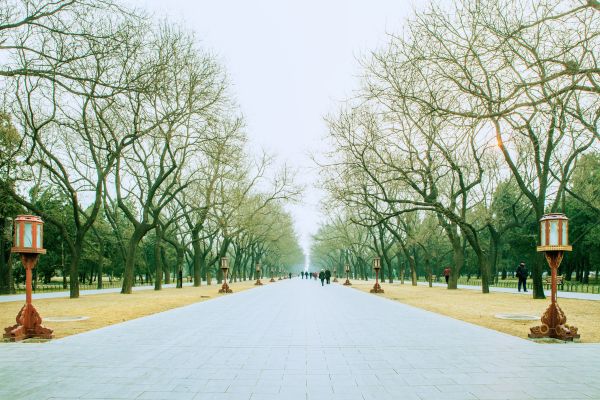
No, China does not move towards case law, but keeps the tradition of statutory law while constantly innovating and exploring. The Similar Cases can be regarded as application tutorials with examples for statutory law.
Chinese judges shall retrieve and refer to the binding Similar Case before rendering judgments. Nevertheless, judges only apply the law by referring to the method embodied in the Similar Case, rather than directly applying the Similar Cases as law. Therefore, China is only approaching case law, but in essence, it remains a statutory law country.
To learn more about the Case System in China, please click here. See the other posts of the Series, for a detailed discussion of China's Guiding Case System and Similar Case System:
Highlights of China's Guiding Case System – Guiding Cases & Similar Cases Series (1)
How China's Guiding Case System Works - Guiding Cases & Similar Cases Series (2)
How Chinese Judges Search for Similar Cases - Guiding Cases & Similar Cases Series (3)
Are China's Guiding Cases a Type of Case Law? - Guiding Cases & Similar Cases Series (5)
When Should Chinese Judges Retrieve Similar Cases? - Guiding Cases & Similar Cases Series (6)
I. China’s Two Attempts to Learn from the Case Law: Similar Case System vs. Guiding Case System
1. The Similar Case System
In July 2020, the Supreme People’s Court (SPC) formally issued a document on the Similar Case Retrieving System(类案检索机制). The System requires that when judges encounter certain circumstances in trials, they shall search for the Similar Case(类案) that is similar to the pending case from the binding cases; and they shall render judgments referring to the Similar Case.
Prior to this, the SPC had begun to explore the Similar Case Retrieving System. In 2015, the SPC proposed to unify the adjudication standards by “Referring to the Similar Case”(类案参考) for the first time. [1] Afterward, in order to supervise judges and restrict their discretion, the SPC issued documents in April 2017, [2] July 2017, [3] and 2019 [4] respectively, proposing to establish a Similar Case Retrieving System. The system requires the judges to search for the Similar Case and made Research Report when hearing cases.
2. The Guiding Case System
As early as in 2010, China had formally established the Guiding Case System (指导性案例制度). As the earliest attempt of China to learn from the case law, under that system, the SPC selects certain cases, streamlines the content, and summarizes the rules. Judges will refer to the rules according to the concise version of cases.
The differences between the Similar Case Retrieving System and the Guiding Case System lie in the following aspects:
(1) The Similar Case Retrieving System requires judges to find the reference objects from all effective judgments of higher courts; while the Guiding Case mechanism only requires searching for reference from cases selected by the SPC (139 cases so far).
(2) The Similar Case Retrieving System requires judges to read the full text of Similar Cases and compare them with the pending case as a whole. The Guiding Case System only requires judges to read the concise version of the Similar Case and compare the similar parts of the case with the pending one.
(3) The Similar Case Retrieving System requires judges to summarize rules from Similar Cases and refer to them. The Guiding Case mechanism only requires judges to directly refer to the rules that the SPC has previously extracted from Similar Cases.
(4) Under the Similar Case Retrieving System, if the Similar Case retrieved is not a guiding case, the judge needs to summarize the rules from it. Therefore, this kind of Similar Case may be referred to, but with no compulsory. In contrast, if the Similar Case retrieved is a Guiding Case whose rules are summarized by the SPC, then this type of case shall be referred to.
Because of this, in terms of retrieval and reasoning methods, the Similar Case Retrieving System is one step further towards the case law than the Guiding Case system, which may be referred to as the 2.0 version of China’s learning from case law.
II. Similar Cases as Tutorials for Application of the Statutory Law
The Similar Cases and the Guiding Cases are only close to case law in terms of certain reasoning, but their binding force is obviously different from the case law.
The aim for judges to retrieve and discover the Similar Case and Guiding Case is to refer them; in other words, to learn from the Similar Case the method of applying the statutory law and use it in the pending cases.
As Judge Liu Shude (刘树德) of the SPC puts, “in our country’s statutory law system, the Similar Cases are not sources of law, and thus they are not legally binding. But in fact, judges may be restricted and refer to them when rendering judgments.”[5]
To be specific, the common aim of both Similar Case Retrieving and the Guiding Case System is to safeguard the application of statutory law, viz., to provide the specific methods for judges about how to understand and apply the law under special circumstances and avoid different judgments in similar cases because of the diversified understanding and application of laws, thereby ensuring the uniform application of the law and improving the law predictability and stability.
In other words, the statutory law is the legal basis in China, while the Similar Cases (including the Guiding Cases) are not. They are only the explanatory materials attached to the statutory law.
In my opinion, the Similar Case Retrieving System is actually recommending for judges models that are more likely to be correct.
In other words, the SPC, the high courts, or the higher-level courts are more likely to make correct judgments than courts at lower levels, so lower courts shall retrieve these cases. This recommendation is only an activity of “searching for the best knowledge and sharing the best experience” within the court system, rather than creating new legal rules for the entire society outside the court.
Therefore, we may regard the Similar Cases as application tutorials with examples for statutory law.
In this sense, the attempts of Chinese courts regarding Similar Cases and the Guiding Cases are just standing in the scope of statutory law and approaching case law.
III. A New Normative System
The SPC has a certain power for enacting rules, that is, the power to explain the application of law.
Prior to this, the SPC exercises this power mainly by enacting judicial interpretation, which is technically similar to law-making, viz., enacting rules that are abstract and general.
Generally, judicial interpretations are more specific than legislation. However, subject to their abstract feature, they still cannot cover all the specific circumstances.
In the meanwhile, Chinese courts are always longing for rules that are more specific, contextualized, and convenient for restricting the discretionary power of judges. Cases can satisfy this need.
China revised the Organization Law of People’s Courts (人民法院组织法) in 2018, which, in addition to enacting judicial interpretations, added new power of the SPC to issue the Guiding Cases. The Guiding Cases may be regarded as rules enacted by the SPC and contextualized in specific scenarios.
The sequence of “Law - Judicial Interpretation - Guiding Cases” demonstrates an “abstract – relatively specific - more specific” provisional layer.
However, the SPC hopes to further “concretize” the rules on this basis. There are only 139 Guiding Cases so far, which is far from satisfying the demand for “more specific and contextualized rules”, and the purpose of restricting judges’ discretion and the aim of ensuring Similar Judgments for Similar Cases have not been fully realized.
By taking one step further, the Similar Case Retrieving System has become completely specific.
The routine trial of the SPC and the high courts and other courts can provide a steady stream of reference cases with a large number of diverse scenarios for courts at the same levels and courts at the lower-level within their jurisdiction. Since then, judges need not rely solely on the Guiding Cases manually selected by the SPC.
The sequence of “Law - Judicial Interpretation - Guiding Cases - (other) Similar Cases” further demonstrates an “abstract - relatively specific - more specific - completely specific” provisional layer.
So far, the SPC has established internally a whole set of legal interpretation system which starts from the law and covers rules from abstract to concrete. China’s case system (including the Guiding Case System and the Similar Case Retrieving System) is only for better interpretation of the law, rather than creating the law. Therefore, it is fair to say that China does not move towards case law, but keeps the tradition of statutory law while constantly innovating and exploring.
Contributors: Guodong Du 杜国栋 , Meng Yu 余萌







